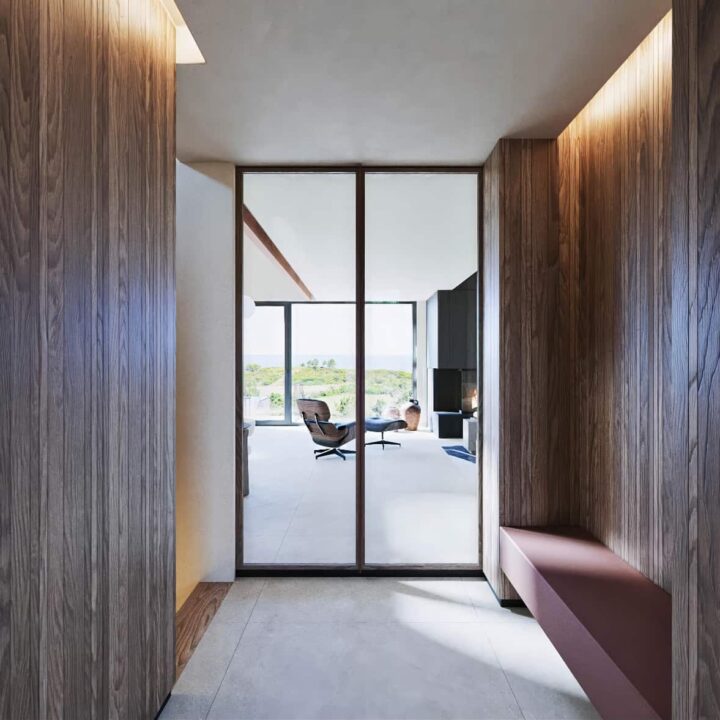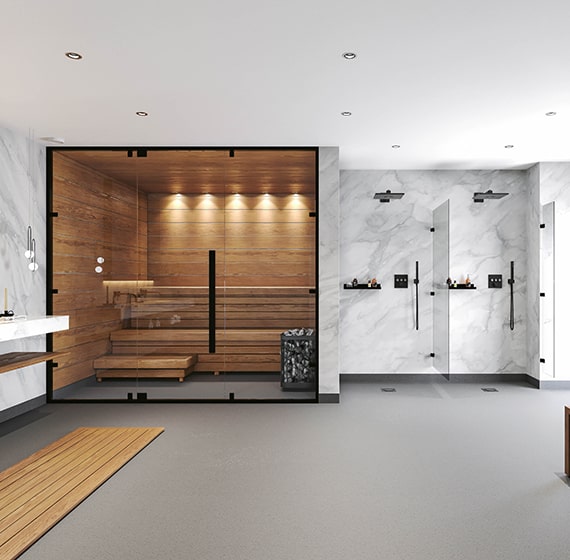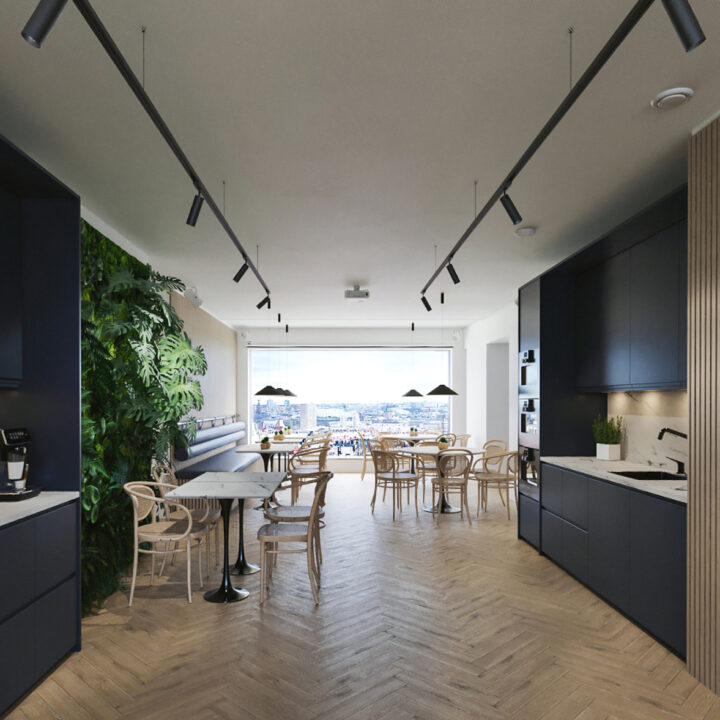Bygglovsritningar
Bygglovsritningar
Planritningstjänst är en professionell tjänst som tillhandahåller detaljerade arkitektoniska ritningar av layouten på en byggnad, ett hem eller annan struktur. Dessa planer innehåller detaljerad information om placeringen av väggar, dörrar, fönster och andra arkitektoniska element, samt placeringen av el- och VVS-armaturer. Tjänsten tillhandahålls vanligtvis av arkitekter, byggare eller ritare som har specialiserad utbildning i att skapa planritningar.
En av de viktigaste fördelarna med att använda en planlösningstjänst är att den låter dig visualisera layouten på ditt utrymme innan bygget börjar. Detta kan hjälpa dig att identifiera eventuella problem eller problem med designen, såsom brist på naturligt ljus eller begränsat utrymme, och göra nödvändiga ändringar innan bygget börjar. Det låter dig också göra nödvändiga ändringar i designen för att säkerställa att utrymmet uppfyller dina behov och preferenser.
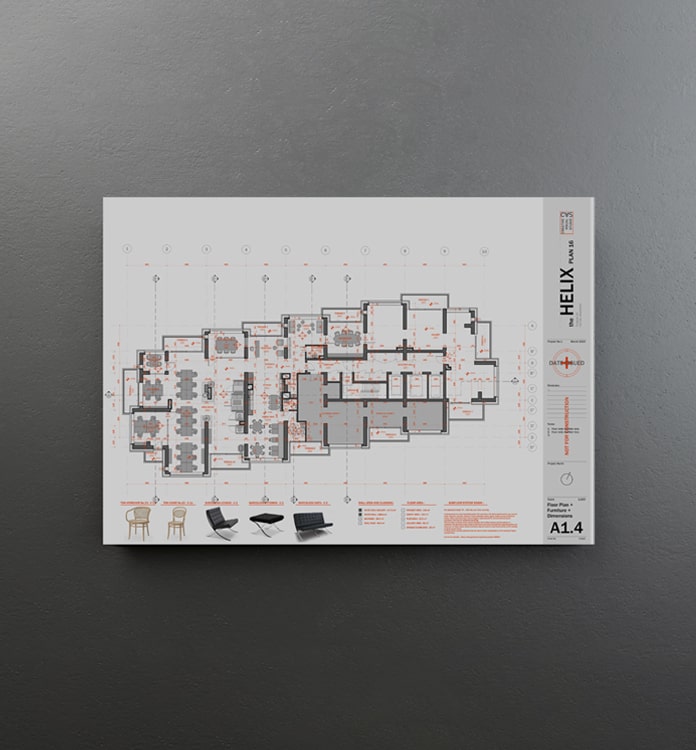

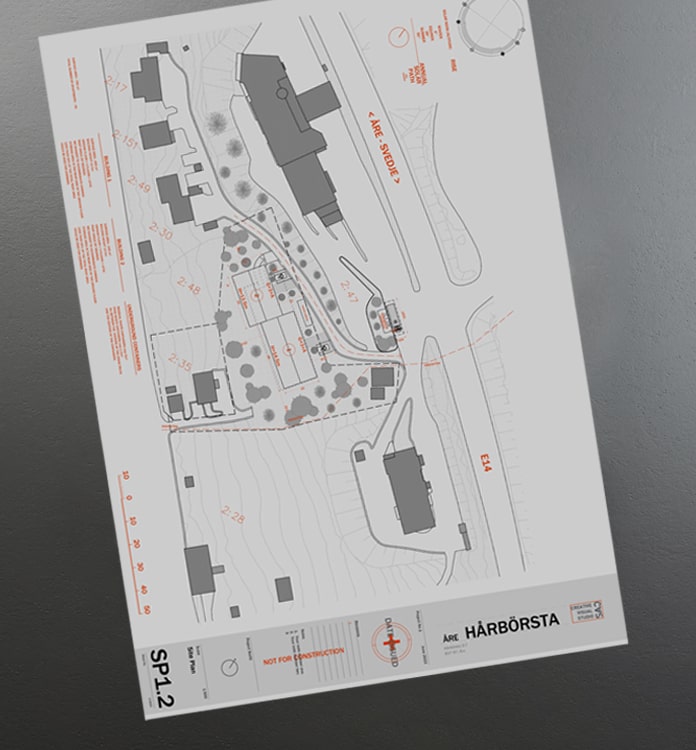
Planritningstjänst är också särskilt användbar när du bygger eller renoverar ett hem, eftersom det kan hjälpa dig att identifiera den bästa placeringen av möbler, apparater och andra hushållsartiklar och se till att layouten är bekväm och beboelig. Dessutom kan tjänsten med planritningar hjälpa dig att förstå förhållandet mellan de olika rummen i ditt hem och hur de flyter ihop.
Sammanfattningsvis är planlösningsservice ett viktigt verktyg för alla som vill bygga eller renovera ett hem, kontor eller annan struktur. Det låter dig visualisera layouten på ditt utrymme innan bygget börjar, identifiera eventuella problem eller problem med designen och göra nödvändiga ändringar för att säkerställa att utrymmet uppfyller dina behov och preferenser. Med hjälp av en professionell planlösningstjänst kan du vara säker på att ditt utrymme kommer att vara funktionellt, effektivt och bekvämt.
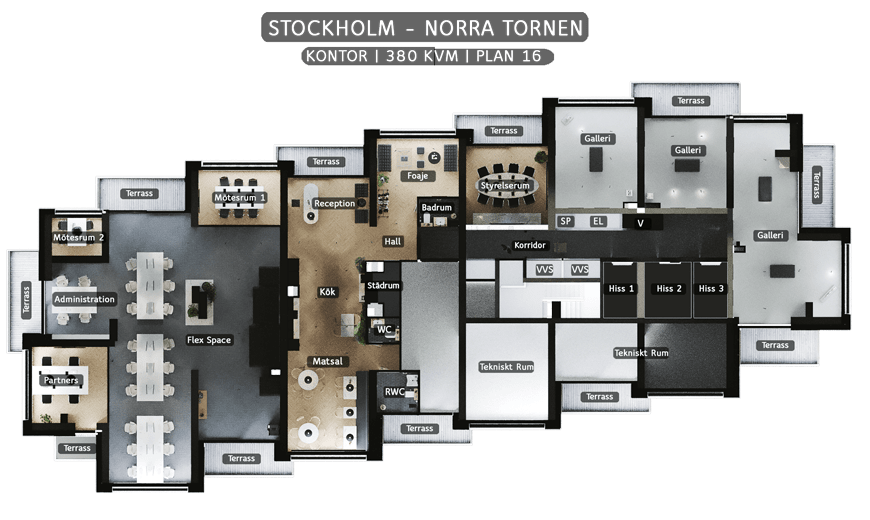
What is Planritning?
Planritning is a simulated 3D environment that enables users to explore and interact with a virtual surrounding in a way that approximates reality, as it is perceived through the users’ senses. The environment is created with computer hardware and software, although users might also need to wear devices such as helmets or goggles to interact with the environment.
The more deeply users can immerse themselves in a VR environment — and block out their physical surroundings — the more they are able to suspend their belief and accept it as real, even if it is fantastical in nature.
What are the main types of Planritning?
The VR industry still has far to go before realizing its vision of a totally immersive environment that enables users to engage multiple sensations in a way that approximates reality.
However, the technology has come a long way in providing realistic sensory engagement and shows promise for business use in a number of industries.
VR systems can vary significantly from one to the next, depending on their purpose and the technology used, although they generally fall into one of the following three categories:
Non-immersive. This type of VR typically refers to a 3D simulated environment that’s accessed through a computer screen. The environment might also generate sound, depending on the program. The user has some control over the virtual environment using a keyboard, mouse or other device, but the environment does not directly interact with the user.
A video game is a good example of non-immersive VR, as is a website that enables a user to design a room’s decor.
Semi-immersive. This type of VR offers a partial virtual experience that’s accessed through a computer screen or some type of glasses or headset. It focuses primarily on the visual 3D aspect of Planritning and does not incorporate physical movement in the way that full immersion does.
A common example of semi-immersive VR is the flight simulator, which is used by airlines and militaries to train their pilots.
Fully immersive. This type of VR delivers the greatest level of Planritning, completely immersing the user in the simulated 3D world. It incorporates sight, sound and, in some cases, touch. There have even been some experiments with the addition of smell.
Users wear special equipment such as helmets, goggles or gloves and are able to fully interact with the environment.
The environment might also incorporate such equipment as treadmills or stationary bicycles to provide users with the experience of moving through the 3D space.
Fully immersive VR technology is a field still in its infancy, but it has made important inroads into the gaming industry and to some extent the healthcare industry, and it’s generating a great deal of interest in others.
What is Planritning?
Planritning is a simulated 3D environment that enables users to explore and interact with a virtual surrounding in a way that approximates reality, as it is perceived through the users’ senses.
The environment is created with computer hardware and software, although users might also need to wear devices such as helmets or goggles to interact with the environment.
The more deeply users can immerse themselves in a VR environment — and block out their physical surroundings — the more they are able to suspend their belief and accept it as real, even if it is fantastical in nature.
What are the main types of Planritning?
The VR industry still has far to go before realizing its vision of a totally immersive environment that enables users to engage multiple sensations in a way that approximates reality.
However, the technology has come a long way in providing realistic sensory engagement and shows promise for business use in a number of industries.
VR systems can vary significantly from one to the next, depending on their purpose and the technology used, although they generally fall into one of the following three categories:
Non-immersive. This type of VR typically refers to a 3D simulated environment that’s accessed through a computer screen. The environment might also generate sound, depending on the program. The user has some control over the virtual environment using a keyboard, mouse or other device, but the environment does not directly interact with the user.
A video game is a good example of non-immersive VR, as is a website that enables a user to design a room’s decor.
Semi-immersive. This type of VR offers a partial virtual experience that’s accessed through a computer screen or some type of glasses or headset. It focuses primarily on the visual 3D aspect of Planritning and does not incorporate physical movement in the way that full immersion does.
A common example of semi-immersive VR is the flight simulator, which is used by airlines and militaries to train their pilots.
Fully immersive. This type of VR delivers the greatest level of Planritning, completely immersing the user in the simulated 3D world. It incorporates sight, sound and, in some cases, touch. There have even been some experiments with the addition of smell.
Users wear special equipment such as helmets, goggles or gloves and are able to fully interact with the environment.
The environment might also incorporate such equipment as treadmills or stationary bicycles to provide users with the experience of moving through the 3D space.
Fully immersive VR technology is a field still in its infancy, but it has made important inroads into the gaming industry and to some extent the healthcare industry, and it’s generating a great deal of interest in others.
What is Planritning?
Planritning is a simulated 3D environment that enables users to explore and interact with a virtual surrounding in a way that approximates reality, as it is perceived through the users’ senses.
The environment is created with computer hardware and software, although users might also need to wear devices such as helmets or goggles to interact with the environment.
The more deeply users can immerse themselves in a VR environment — and block out their physical surroundings — the more they are able to suspend their belief and accept it as real, even if it is fantastical in nature.
What are the main types of Planritning?
The VR industry still has far to go before realizing its vision of a totally immersive environment that enables users to engage multiple sensations in a way that approximates reality. However, the technology has come a long way in providing realistic sensory engagement and shows promise for business use in a number of industries.
VR systems can vary significantly from one to the next, depending on their purpose and the technology used, although they generally fall into one of the following three categories:
Non-immersive. This type of VR typically refers to a 3D simulated environment that’s accessed through a computer screen. The environment might also generate sound, depending on the program.
The user has some control over the virtual environment using a keyboard, mouse or other device, but the environment does not directly interact with the user.
A video game is a good example of non-immersive VR, as is a website that enables a user to design a room’s decor.
Semi-immersive. This type of VR offers a partial virtual experience that’s accessed through a computer screen or some type of glasses or headset. It focuses primarily on the visual 3D aspect of Planritning and does not incorporate physical movement in the way that full immersion does.
A common example of semi-immersive VR is the flight simulator, which is used by airlines and militaries to train their pilots.
Fully immersive. This type of VR delivers the greatest level of Planritning, completely immersing the user in the simulated 3D world. It incorporates sight, sound and, in some cases, touch.
There have even been some experiments with the addition of smell. Users wear special equipment such as helmets, goggles or gloves and are able to fully interact with the environment.
The environment might also incorporate such equipment as treadmills or stationary bicycles to provide users with the experience of moving through the 3D space.
Fully immersive VR technology is a field still in its infancy, but it has made important inroads into the gaming industry and to some extent the healthcare industry, and it’s generating a great deal of interest in others.
What is Planritning?
Planritning is a simulated 3D environment that enables users to explore and interact with a virtual surrounding in a way that approximates reality, as it is perceived through the users’ senses.
The environment is created with computer hardware and software, although users might also need to wear devices such as helmets or goggles to interact with the environment.
The more deeply users can immerse themselves in a VR environment — and block out their physical surroundings — the more they are able to suspend their belief and accept it as real, even if it is fantastical in nature.
What are the main types of Planritning?
The VR industry still has far to go before realizing its vision of a totally immersive environment that enables users to engage multiple sensations in a way that approximates reality.
However, the technology has come a long way in providing realistic sensory engagement and shows promise for business use in a number of industries.
VR systems can vary significantly from one to the next, depending on their purpose and the technology used, although they generally fall into one of the following three categories:
Non-immersive. This type of VR typically refers to a 3D simulated environment that’s accessed through a computer screen. The environment might also generate sound, depending on the program.
The user has some control over the virtual environment using a keyboard, mouse or other device, but the environment does not directly interact with the user.
A video game is a good example of non-immersive VR, as is a website that enables a user to design a room’s decor.
Semi-immersive. This type of VR offers a partial virtual experience that’s accessed through a computer screen or some type of glasses or headset.
It focuses primarily on the visual 3D aspect of Planritning and does not incorporate physical movement in the way that full immersion does. A common example of semi-immersive VR is the flight simulator, which is used by airlines and militaries to train their pilots.
Fully immersive. This type of VR delivers the greatest level of Planritning, completely immersing the user in the simulated 3D world. It incorporates sight, sound and, in some cases, touch . Current Times World Information Centre
There have even been some experiments with the addition of smell. Users wear special equipment such as helmets, goggles or gloves and are able to fully interact with the environment.
The environment might also incorporate such equipment as treadmills or stationary bicycles to provide users with the experience of moving through the 3D space.
Fully immersive VR technology is a field still in its infancy, but it has made important inroads into the gaming industry and to some extent the healthcare industry, and it’s generating a great deal of interest in others Health today.
What are the main types of Planritning?
The VR industry still has far to go before realizing its vision of a totally immersive environment that enables users to engage multiple sensations in a way that approximates reality.
However, the technology has come a long way in providing realistic sensory engagement and shows promise for business use in a number of industries.
VR systems can vary significantly from one to the next, depending on their purpose and the technology used, although they generally fall into one of the following three categories:
Non-immersive. This type of VR typically refers to a 3D simulated environment that’s accessed through a computer screen. The environment might also generate sound, depending on the program. The user has some control over the virtual environment using a keyboard, mouse or other device, but the environment does not directly interact with the user.
A video game is a good example of non-immersive VR, as is a website that enables a user to design a room’s decor.
Semi-immersive. This type of VR offers a partial virtual experience that’s accessed through a computer screen or some type of glasses or headset. It focuses primarily on the visual 3D aspect of Planritning and does not incorporate physical movement in the way that full immersion does.
A common example of semi-immersive VR is the flight simulator, which is used by airlines and militaries to train their pilots.
Fully immersive. This type of VR delivers the greatest level of Planritning, completely immersing the user in the simulated 3D world. It incorporates sight, sound and, in some cases, touch. There have even been some experiments with the addition of smell. Users wear special equipment such as helmets, goggles or gloves and are able to fully interact with the environment.
The environment might also incorporate such equipment as treadmills or stationary bicycles to provide users with the experience of moving through the 3D space.
Fully immersive VR technology is a field still in its infancy, but it has made important inroads into the gaming industry and to some extent the healthcare industry, and it’s generating a great deal of interest in others.
What is Planritning?
Planritning is a simulated 3D environment that enables users to explore and interact with a virtual surrounding in a way that approximates reality, as it is perceived through the users’ senses.
The environment is created with computer hardware and software, although users might also need to wear devices such as helmets or goggles to interact with the environment.
The more deeply users can immerse themselves in a VR environment — and block out their physical surroundings — the more they are able to suspend their belief and accept it as real, even if it is fantastical in nature.
What are the main types of Planritning?
The VR industry still has far to go before realizing its vision of a totally immersive environment that enables users to engage multiple sensations in a way that approximates reality.
However, the technology has come a long way in providing realistic sensory engagement and shows promise for business use in a number of industries. Sophia education
VR systems can vary significantly from one to the next, depending on their purpose and the technology used, although they generally fall into one of the following three categories:
Non-immersive. This type of VR typically refers to a 3D simulated environment that’s accessed through a computer screen. The environment might also generate sound, depending on the program. The user has some control over the virtual environment using a keyboard, mouse or other device, but the environment does not directly interact with the user.
A video game is a good example of non-immersive VR, as is a website that enables a user to design a room’s decor End Roar.
Semi-immersive. This type of VR offers a partial virtual experience that’s accessed through a computer screen or some type of glasses or headset.
It focuses primarily on the visual 3D aspect of Planritning and does not incorporate physical movement in the way that full immersion does. A common example of semi-immersive VR is the flight simulator, which is used by airlines and militaries to train their pilots.
Fully immersive. This type of VR delivers the greatest level of Planritning, completely immersing the user in the simulated 3D world. It incorporates sight, sound and, in some cases, touch.
There have even been some experiments with the addition of smell. Users wear special equipment such as helmets, goggles or gloves and are able to fully interact with the environment.
The environment might also incorporate such equipment as treadmills or stationary bicycles to provide users with the experience of moving through the 3D space. Fully immersive VR technology is a field still in its infancy, but it has made important inroads into the gaming industry and to some extent the healthcare industry, and it’s generating a great deal of interest in others.


